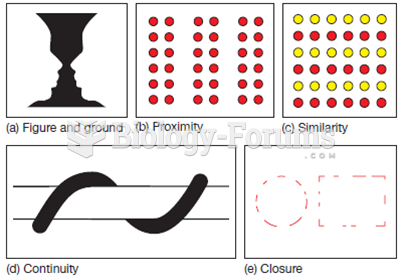|
|
|
People with high total cholesterol have about two times the risk for heart disease as people with ideal levels.
Eating food that has been cooked with poppy seeds may cause you to fail a drug screening test, because the seeds contain enough opiate alkaloids to register as a positive.
There are 20 feet of blood vessels in each square inch of human skin.
There are over 65,000 known species of protozoa. About 10,000 species are parasitic.
For about 100 years, scientists thought that peptic ulcers were caused by stress, spicy food, and alcohol. Later, researchers added stomach acid to the list of causes and began treating ulcers with antacids. Now it is known that peptic ulcers are predominantly caused by Helicobacter pylori, a spiral-shaped bacterium that normally exist in the stomach.






